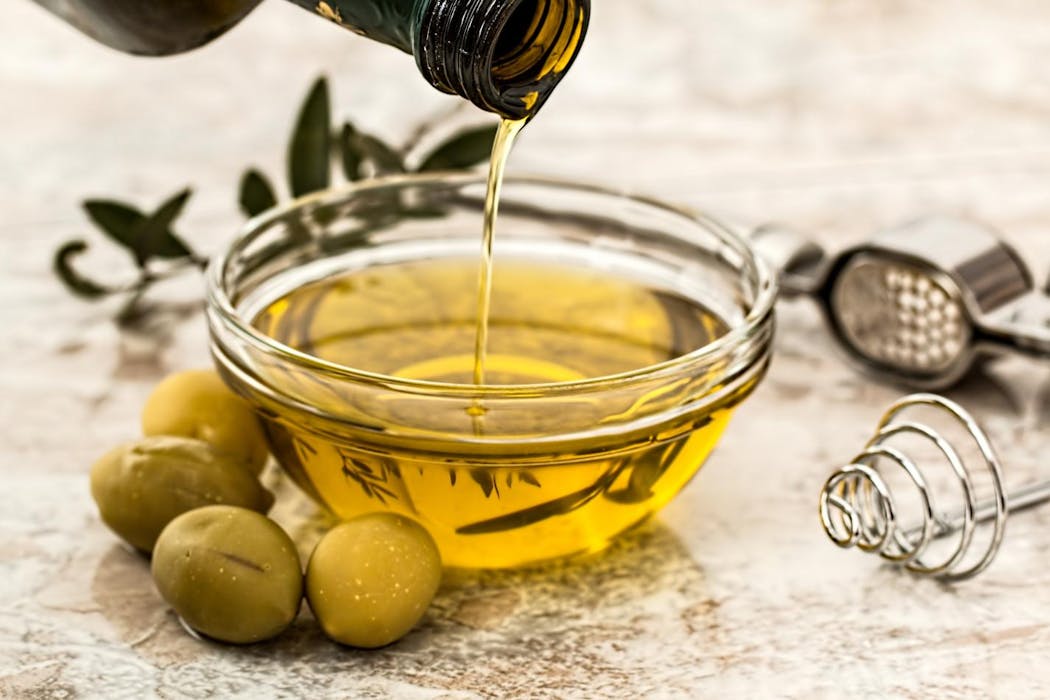 Back
Back
The Best Cooking Fats & Oils
From olive oil to canola oil and butter to margarine, cooking oils are one of the most confused topics in the nutrition world. Walk into any supermarket and there is an entire aisle dedicated to cooking oils making it more confusing than ever for consumers. Fortunately, it’s not as complicated as it might seem, so here is a guide to the six best cooking oils and why you should be using them.

From olive oil to canola oil and butter to margarine, cooking oils are one of the most confused topics in the nutrition world. Walk into any supermarket and there is an entire aisle dedicated to cooking oils making it more confusing than ever for consumers. Fortunately, it’s not as complicated as it might seem, so here is a guide to the six best cooking oils and why you should be using them.
Types of Fats
There are two primary types of dietary fats: saturated and unsaturated. Although saturated fat has received a bad rap in the past years, it is one that it does not deserve. In fact, it is the saturated nature that actually makes them the best source of cooking oil. Allow me to explain.
The difference between saturated and unsaturated fats can be found within their bond structure. The bonds in saturated fats are, quite literally, more saturated. Saturated fats do not contain double bonds as each carbon (C) has two hydrogens (H), while unsaturated fats do contain double bonds. The presence of this double bond in the chain of carbons, creates a more unstable structure in the fat. This is why saturated fats are found to be solid at room temperature, while unsaturated fats are found liquid at room temperature. For this reason, saturated fats are very stable, and less easily damaged by light, heat and air. Contrarily, unsaturated fats (monounsaturated or polyunsaturated) are more susceptible to going rancid as they are more easily be damaged by light, heat and air.
Therefore, the more unsaturated an oil is, the less ideal it is for heating and cooking as they are very susceptible to oxidation and rancidity. Although vegetable oils (canola, soybean, cotton, corn, etc..) and seed oils have been touted as “heart-healthy” sources of cooking oil, they are in fact not. Not only are they susceptible to damage by heat, but the high concentration of polyunsaturated fatty acids, also known as PUFAs, in vegetable oils are not only what cause the oxidation, but in excess cause inflammation in the body. The ideal ratio of consumption of omega 6 to omega 3 fatty acids is somewhere in the range of 1:1 to 4:1, however, that ratio has increased as high as 20:1 in some cases due to the increased consumption of vegetable oils. Not only are these oils easily damaged but their high concentration of PUFAs can cause inflammation in the body and impair gut health.
The Best Cooking Oils
The good news is the best cooking oils are in fact the most delicious! Not only are they all whole foods, but they are incredibly nutrient dense as well. So here are the 6 fats you should start cooking with today.
1. Animal Fats
Animal fats are the most natural and traditional form of cooking oil, and although many people fear them, there is no need to, as they are one some of the most nutrient dense sources of cooking oil. Pork fat (lard or bacon), beef fat (tallow) or duck fat are highly saturated and solid at room temperature, therefore are very heat stable for cooking at high temperatures. So you can cook your bacon, then fry your eggs, and not feel bad about it at all.
2. Butter
Butter is a traditional cooking fat that simply got a bad rap. Because butter is a saturated fat it is ideal for cooking with, however does have a slightly lower smoke point than the other fats listed. When buying butter ensure you are opt for high quality butter from pastured, grass-fed cows making it a rich source of CLA, vitamin A, vitamin K and vitamin D.
3. Ghee
For people who are sensitive to dairy, ghee is a great alternative to butter. Ghee, also know as clarified butter, is made by simmering butter, which is churned from cream, and removing the liquid residue. In doing so, the milk constituents that can be bothersome (lactose and casein) have been removed. You can buy ghee in store, or you can also make it yourself at home.
4. Coconut Oil
Coconut oil is roughly 90% saturated fat making it an ideal oil for heating and cooking. It is very stable and it’s medium chain triglycerides (MCT) fats are easily converted into a source of energy in comparison to other sources of fat.
5. Olive Oil
Olive oil is in fact a monounsaturated fat, however it makes the list as it does fairly well under moderate temperatures, as long as it is not used for high-heat frying. When buying olive oil, look for versions in dark glass bottles to avoid oxidization from light, and always store your olive oil in the pantry, never on top of the stove in order to keep it away from heat.
6. Avocado Oil
Avocado oil has a fatty acid profile is similar to that of olive oil, but it has an even higher smoke point, making it a decent choice for cooking. Much like olive oil, opt for avocado oil in dark glass bottles and be sure to store it away from heat and light sources.
Article By:
Stephanie Kay Nutrition
Posted on
January 27th, 2022







